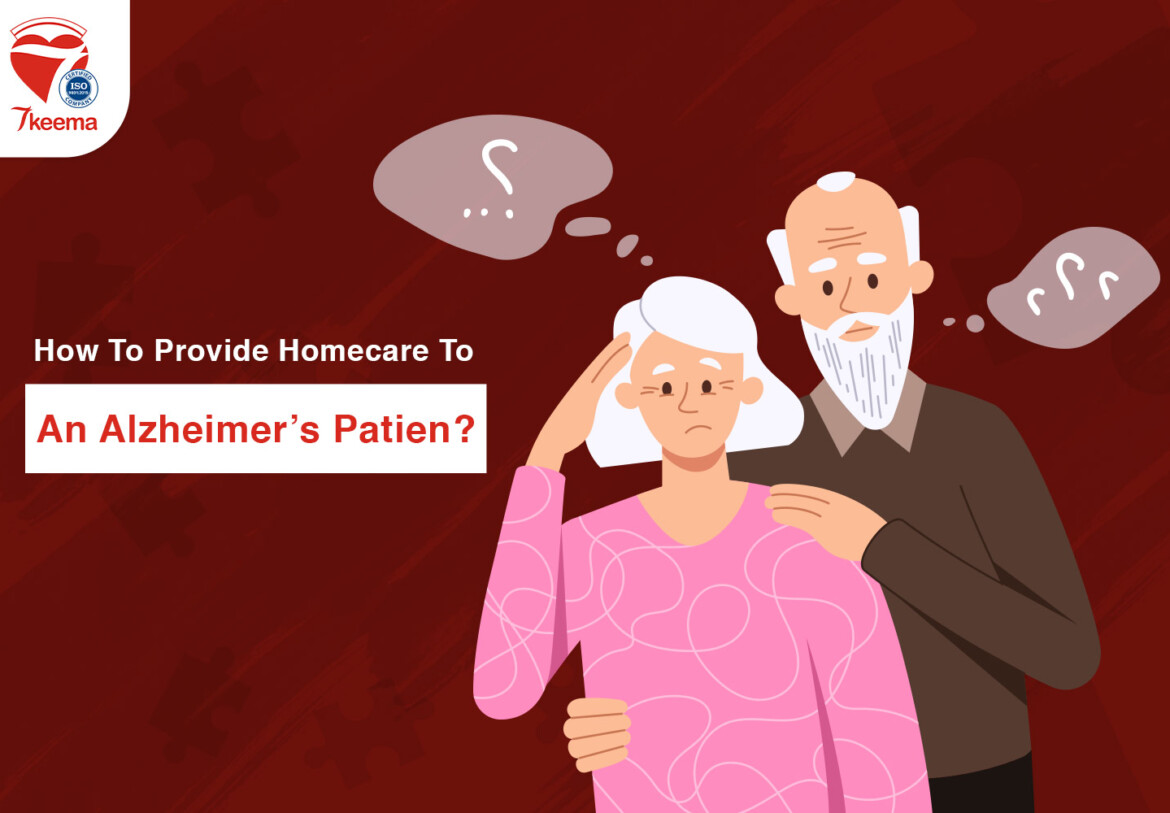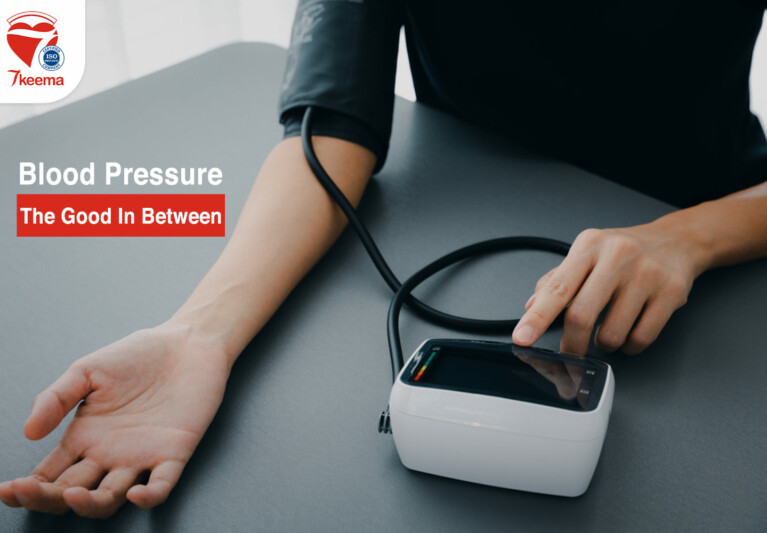When a family member goes into the geriatric phase, many signs and symptoms develop, directly impacting daily life. Especially with Alzheimer’s disease is a possible risk; knowing that Alzheimer’s disease is making a broad disturbance, whether for the patient himself or his family and surrounding ones, leads everybody to search for a proper solution, which could be provided by home nursing.
It’s always recommended to keep things as they used to be while giving care to an Alzheimer’s disease patient, as many studies have proved that an Alzheimer’s patient would prefer the same things, activities, and routine as he used to have. It could be more helpful while receiving care.
So, what’s the best way to provide proper healthcare to an Alzheimer’s patient, which guarantees efficiency without making it painful for his family members?
For instance, the answer could be resumed into two words, Home Nursing, which offers a provider ready to accompany the patient for as long as it’s needed. In contrast, the family stays the first controller. Home nursing only offers help without cancelling the primary role of family members.
Therefore, and out of these points, we dedicated this article to delivering an important message: how to deal with an Alzheimer’s patient, whether by asking for a home nursing service or providing home care without any help.
Steps to Provide a Homecare for Alzheimer’s Patients

Create a Daily Routine
It’s essential to keep the Alzheimer’s patient in an active state of mind as possible, which could be achieved by creating a routine and sticking to it. Making a list of commands and tasks that should be checked every day would help the patient focus, while the care provider, whether a home nursing provider or a family member, should ensure following this routine daily.
To make a routine that suits the patient, the provider should track his acts and behaviour. Craft something that would make the day more active, knowing the exact times when the patient is more dynamic and in a better state of mind, then schedule the main activities to run during this time.
This routine should be strict yet flexible; the provider should have a proper amount of flexibility to contain any mood swings and provide what’s in the patient’s best interest.
7keema for home nursing provides an effective service for Alzheimer’s disease patients that aims to help them overcome their symptoms. In addition to many other home nursing services could be integrated and adapted to support Alzheimer’s disease.
Connection with Alzheimer’s Patient
Relationships are built on connection and social communication, which could be challenging due to Alzheimer’s disease. In contrast, communication is a must to give the proper care and support, whether physical or mental.
Obviously, an Alzheimer’s disease patient’s consciousness and comprehension are heading downward every day, which’s reflected on the patient responses and reflections, as it could lead to the point where patient and caregiver would lose the way of communication in between them, arousing the feeling of loneliness and isolation for the patient.
Therefore, some tips are meant to facilitate the communication between a caregiver, whether a home nursing provider or a family member and Alzheimer’s disease patient:
– It’s all about patience. A home nursing provider or any family member should be extremely patient.
– Use short comprehensive sentences, don’t use complicated synonyms, be clear and direct.
– Use a calm voice tone, yet straightforward.
– Speak softly and slowly, without giving the impression that you’re dealing with a kid.
– Give respect, don’t consider the Alzheimer’s disease patient as if he’s not around.
– When trying to handle a conversation, try to avoid any distractions, such as TV, radio, or whatever, to let the Alzheimer’s disease patient focus as much as he can.
– We have all the time of the world, under any circumstances and for whatever reason, don’t interrupt the patient while speaking.
– Try to distinguish the patient’s expressions and gestures by linking them to what he could need right now.
– Ask questions in the form of multiple choices, avoid open answer questions.

Daily Activities
Every day, we go through a series of activities that we’re practising without any previous plan, as we’re almost doing them unconsciously. In contrast, it couldn’t be the same for those with Alzheimer’s disease, reaching out to a point where any simple act or activity could be challenging.
It’s when giving a hand would be highly needed and appreciated, whether by a home nursing provider or by a family member. The mission is to help the patient through his daily activities that are irreplaceable.
These activities are mainly linked to hygiene, using the restroom, eating, wearing clothes, and many more. We could discern how essential having someone ready to offer help whenever needed, knowing that Alzheimer’s disease would prevent the patient from being aware enough to do such activities by himself.
Taking the safe side, home nursing would be making it easier to deal with. Alzheimer’s disease would require a professional treatment while using 7keema’s application and asking for the elderly care service, and benefiting from many more home nursing services.
Following, we’ll show many types of daily activities and discuss how to help an Alzheimer’s patient.

Bathing
A simple act as taking a bath could be more complicated due to Alzheimer’s disease. A patient would be incapable of doing such activity by himself and requires help to prevent any possible accident that could be dangerous.
On the other side, the patient could lose track of time and forget the last shower time, making him believe he doesn’t need a bath currently, which frames the first point we discussed through this article: create a routine. Setting a fixed bathing time weekly or half-weekly could be enough. It’s not required to be daily.
However, helping through bathing sessions would be easier if the care provider followed these few steps:
– Good preparation, setting towels, clothes, and tools in order of usage.
– Water temperature check, ensuring water is warm, not too hot, not too cold.
– Use a bath chair to avoid slipping or falling during bath time; it’s highly recommended to avoid any accidents.
– Don’t leave the patient alone.
– Always communicate with the patient while offering help, and let him know the next step you’re planning to take before doing it.
– Give him enough space to act and go through his bath by himself while always keeping an eye and intervening whenever needed.
– It’s not recommended to have a bath daily. Once or twice a week is enough.
Dressing
Who doesn’t wake up in the morning and get dressed to start his day; as simple as it sounds, as much it could be challenging due to Alzheimer’s disease.
For instance, the patient would not be able to pick, choose, and get dressed by himself, not to mention knowing when he should get dressed and what could suit every occasion.
In fact, home nursing has considered such activity; care providers are ready to help by getting dressed several times per day.
In general, some tips could help out the care provider, whether a home nursing provider or a family member, to offer proper help the patient get dressed, between which we can mention:
– No need to rush; it’s highly recommended to schedule dressing time way before the desired time to go.
– Give options, but few; it’s better to let the patient choose his clothes, though the provider should only give two or three options to choose between, avoiding any confusion.
– If the patient prefers a specific outfit, provide several pieces from the same one with different colours.
– Minimize his options, and it’s better to keep the rest of his belongings away.
– Let the patient start wearing by himself and give help only when needed.
– Try to provide comfortable outfits, easy to put on and easy to take off.

Going To The Restroom
No doubt it’s critical and mandatory, yet, Alzheimer’s disease has many negative impacts.
Most probably, and while the case is getting worse, the patient would lose control and not be able to reach the restroom in good time, which could lead to many complications.
In fact, this type of service and care is very confidential and private. It could be confusing and uncomfortable for the care provider and the patient, though it’s essential and should be done. Home nursing is actually putting an end to such frustration. Providers are highly trained and always ready to contain such events.
Alternatively, some tips could be helpful through this kind of service, a home nursing provider is following them, and a family member is recommended to do so.
– Follow a timing schedule, reduce time spans between each restroom visit as much as possible; don’t wait for the patient to ask if it’s time to visit the restroom, so it’s and nothing should interrupt.
– Watch and monitor signs and behaviours that would mean the patient needs a restroom visit, such as looking uncomfortable and pulling his clothes repeatedly and taking an instant act accordingly.
– It’s recommended to limit fluids intake at night to avoid any leakage during sleep.
– Good planning before going out, determine where the closest restroom is, and be ready with an extra outfit for emergencies.

Eating
It’s pretty confusing, Alzheimer’s disease would lead the patient into one of two directions, whether he cannot remember when his last meal was, or he’s delusional that he has just received a meal and there’s no need to eat now. Both cases are critical.
On the other side, Alzheimer’s disease could lead to having difficulties swallowing, which could prevent the patient from having enough calories or choking during eating.
A home nursing provider should follow some instructions that could help him out during such service, between which we can mention:
– Allow the patient to choose between two or three meals to have.
– Meals should be diverse in taste and colours.
– Provide many meals, with small portions. Avoid large portions.
– Use some practical utensils and tools that allow the patient to eat by himself.
– Serve fluids in vessels with a led.
– Monitor any signs of choking, and make sure the patient has swallowed before giving another bite.
Daily Exercises
Alzheimer’s disease is decreasing the patient’s mental ability, and while it’s still not curable, the care provider should try to refresh his mental state all along the day to slow the disease’s impact as much as he can.
It’s highly recommended to encourage the Alzheimer’s disease patient to practice his hobbies as he used to do.
For instance, it’s one of the prominent roles of any home nursing service during such a case, not only encouraging but also organising such activities.
To implement such activity, some steps could be helpful:
– Divide any activity into several steps to make it easier.
– Beware of any signs of suffocation during any activity, and act instantly.
– Home nursing provider should always put the patient into a continuous active state, even during eating.
– You can ask for 7keema’s elderly care home nursing service to provide the best care to Alzheimer’s disease patients.
Alzheimer’s Patient Behavior
Sundown Syndrome & Sleep Issues
It’s most probably for an Alzheimer’s patient to feel uncomfortable and anxious in the evening. In fact, this is a widely known case called Sundown Syndrome, leading to many sleeping disorders and issues.
Accordingly, it’s recommended to follow these steps:
– Scheduling any physical activities to be in the early morning.
– Reduce and limit nap times to have a good night sleep.
– Limit family activities after sundown, provide calmness.
– Avoid total darkness, even during sleep; make sure to have at least one source of light on.

Hallucinations & Dilutions
A dominant symptom of Alzheimer’s disease, the patient would start to see and recognise unreal things that do not exist, which could lead him to do unexpected acts that might be dangerous.
Therefore, whether a home nursing provider or a family member, the caregiver should be aware of the patient’s movement and set some new measurements to prevent him from hurting himself.
– Checkup periodically with a specialist doctor; this symptom could be due to many other diseases.
– Do not try to convince the Alzheimer’s patient that he’s hallucinating.
– Contain any fear or emotional swing.
– Avoid watching action, and violent movies; an Alzheimer’s disease patient, could lose the ability to differentiate between reality and fiction.
– Ensure the patient’s safety, and keep sharp tools away from him.
Wandering
It’s widely known that Alzheimer’s disease would lead the patient to wander around without any apparent purpose, and it could go as far as beyond the neighbourhood. Many cases were lost due to such symptoms.
While caring for Alzheimer’s disease, many measurements should be taken around the house to prevent any similar case and keep someone always by the patient’s side, which a home nursing service could realise.
It’s recommended to do as follows:
– Report neighbours with the patient’s case update, and ask for their help if they noticed any unusual event.
– Lock the house doors firmly with some new locks that the patient didn’t use to unlock.
– It’s highly recommended to set up an alarm device on windows and doors.

Home Safety
It’s pretty obvious that the patient needs to have a safe environment to live in to maintain his mental instability. Accordingly, the house should be appropriately set up to suit his case.
It’s recommended to follow these following tips:
– Remove any lock from bedrooms and bathroom doors to avoid locking the Alzheimer’s patient in.
– Keep medicines and drugs in a safe place away from the patient’s reach.
– Safely store any sharp, flammable, and electronic tools.
– Remove any barrier that could obstruct the patient while moving.

7keema Can Help You
Without any doubt, Alzheimer’s disease is a critical health issue; providing home care for such disease is quite challenging on both levels, physical and mental. Not to mention family disturbances and troubles due to having a housing case.
Home nursing is directly related to Alzheimer’s disease; actually, 7keema provides several home nursing services, between which comes the elderly care service that could be adapted to care for an Alzheimer’s disease patient.
For instance, 7keema home nursing services are provided by high-trained nurses and experienced staff. You can ask for an elderly sitter with vast experience in Alzheimer’s disease cases, set how long you want the provider, and customise a suitable package.
In a broader look, 7keema is offering many home nursing services, such as catheter instalment, wound care, quick services, home shifts, medical transport, and pandemic care.
Not to mention the medical devices rental, which allow anyone to reach a BIPAP, CPAP, Oxygen generator, Vacuum, and more.
These home nursing services could be integrated to offer a better home care experience concerning Alzheimer’s patients.




